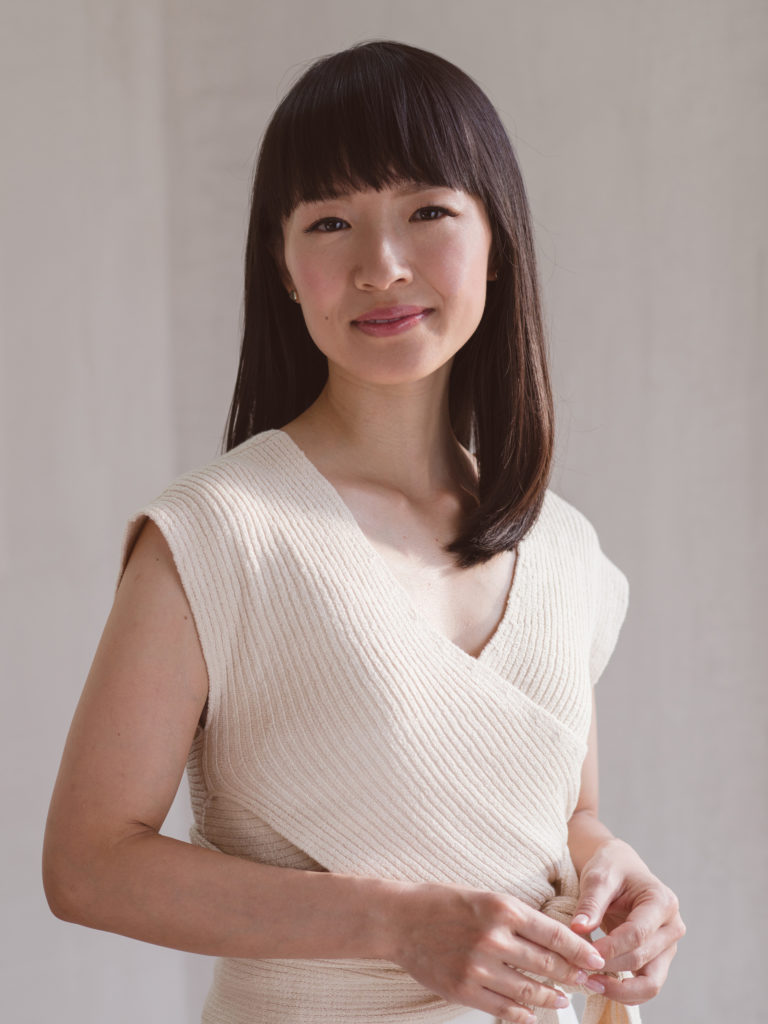By Roger Ali (April 24, 2020)
Joy at Work: Organizing Your Professional Life, Marie Kondo and Scott Sonenshein, Little, Brown Spark, April 7, 2020, 256 pp., $16.99
Tidying expert, Marie Kondo, has collaborated with Scott Sonenshein, an organizational psychologist, to help individuals overcome the challenges of workplace mess and enjoy the productivity, success and happiness that come with the physical and non-physical aspects of your job.
Their work Joy at Work: Organizing Your Professional Life provides practical insights about how to spark joy in your job.
Fascinated by tidying since the age of five, Kondo took her first steps as a tidying consultant at the age of nineteen. Originally published in 2011, her KonMari method is a system for tidying your life. But the KonMari method isn’t just about a clean home, Kondo says, it’s about choosing joy, transforming your life, and looking to the future including looking forward to your work.
By painting a picture of a messy desk, piled high with documents, unopened letters, unread books and sticky-note reminder, she starts with what many of us can relate to—a frantic search for a file and being unable to find it. A survey of one thousand American adults, found 90 percent felt that clutter had a negative impact on their lives including lower productivity, a negative mindset, reduced motivation and diminished happiness.
The cardinal rule of tidying means starting with your own desk.
She her own story of arriving early, staying late, working hard and still not getting good results. Everything around her was a complete mess. After she came in early and tidied her desk, she was a lot happier and began to experience more joy in her work.

A tidy desk results in a higher evaluation of one’s character and capacity, raises our self-esteem and increases one’s motivation. Employees work harder and their performance improves.”
MARIE KONDO
Kondo invites the reader to imagine, in concrete detail, their day at work while asking what kind of work life sparks joy for you and what values are important in your work. She provides a practical exercise of twelve statements to identify what sparks joy at work, a quick exercise to help a leader what’s important to their team.
If you work at home, deal with work-related items separately from personal items and start with the easiest and work up to the hardest category. This helps you to develop capacity to choose what to keep or let go and decide where to store everything.
The question in choosing what to keep—does it spark joy?—is the key to the KonMari Method. To choose what sparks joy is to focus on the positive aspects of the things we own, while to choose what to discard is to focus on the negative.
Kondo describes tidying books as a powerful means of self-discovery. She poses a set of questions to help the reader explore their relationship with each one and the awareness helps you to decide whether or not a book will bring you joy if you keep it. She proceeds to say dealing with papers is usually the most time-consuming part of tidying a workspace. It can be helpful to sort papers into categories while you are skimming through the content.
Kondo describes a clear process for tidying by category and choosing what to keep and what to let go with clear criteria for each. Her advice is to fix that image of joyful work life firmly in your mind and forge ahead.
The three rules for storage are:
- Categorize every paper down to the last sheet
- Store your papers upright
- Make a pending box
Kondo considers her computer desktop to be a workspace, just like her desk, to display only those things that she intends to use right away.

Her co-author, Sonenshein, addresses digital life and divides it into three parts: digital documents, such as reports, emails and smartphone apps. All three share the problem. It’s easy to save everything.
Sonenshein recommends creating a handful of main folders to minimize the amount of thought that goes into where to put or find something.
When managing email, keep only what’s needed for future and store email in a logical set of a few folders, typically ten or fewer, including subfolders. He likes to keep a joy folder with emails to read when he is having a bad day. Sonenshein reveals fewer apps on your phone means fewer distractions.
The average person uses a smartphone eighty-five times a day, adding up to more than five hours of. He asks the questions that will help you determine if an app is worth keeping. By going through the process of cleaning your digital data, you start to realize that these are just tools to help you work, not a storage depot that archives your entire professional life.
Getting ahold of activity clutter can shorten our workdays and add joy to our work if we learn how to do it, says Sonenshein. Activity clutter comes from the things we do that take up and sap our energy but don’t make a meaningful difference to our personal, professional or company’s mission.
Three traps can lead to activity clutter: over-earning by working too hard for the wrong results, prioritizing urgent tasks over important ones, and multitasking. He offers help you to address these traps. He wants you to give up on the idea of needing to always make a perfect decision.
Sometimes you will, but many times you won’t. Before making a decision, ask what type of outcome will spark joy for you. There’s no use in seeking a perfect decision when a good-enough one will make you just as happy. He reminds you to set a deadline for decision making.
Research has shown that the more time we spend on social media, the less happy we are. Sonenshein and Kondo says one of the most important points in building a joyful network is knowing what kind of connections you enjoy. “
She asks probing questions for evaluating your contacts, identifying those who spark joy.
He talks about being present to make high-quality connections that goes beyond a Facebook “like” of a friend’s post. It’s perfectly fine to say no to superficial requests, just as it’s personally rewarding to use your network to help people you really care about.
Sonenshein provides useful advice to running and bringing more joy to meetings and leading teams. While the rules to entering a shared space are not surprising, he reminds us to show up, come prepared, put away your electronics, listen, speak up, do no harm and finally, support others.”
The steps to running a tidy meeting are simple with a set of thoughtful questions to engage individuals and bring more joy to the space they are in. He gives an important reminder for tidying teams and talks about trusting one another which helps people avoid burning out and bringing work problems home. When someone challenges an idea, it doesn’t mean they don’t like you or are mean-spirited. Identifying what kinds of things spark joy for each team member can help. At meetings, ask staff to share what they have done to make customers happy, a “Wow Moment”.
Their advice is the success of the team is everyone’s responsibility, no matter their job title, seniority or tenure and teams are a privilege for us to enjoy at work. They encourage team members to talk about their tidying journey and fill the rest of the office with more joy.
The book, Joy At Work covers how to tidy your office, digital data, time, decisions, networks, meetings and teams. She shares that to spark even more joy at work one has to maintain a state of gratitude throughout the day. She suggests employing “joy plus” by adding personal items to your workspace that lift your spirits and make inspiration spring more easily to mind.
The main lesson is tidying is the first step and most effective step toward realizing your vision of a joyful career.
Joy at work sparks joy in life.
(Roger D. Ali, MBA, CFRE is president and CEO of the Niagara Health Foundation @fundraiseroger)
